For some reason, we’re in the mood to talk Plymouths today—and we figured now’s a good time to tell you about All American Racers too.
And we mean that both figuratively and literally, in the context of a rare Plymouth Barracuda inspired a famous race series and legendary race team.

Mopar’s Involvement in Trans Am
The AAR ‘Cuda story starts with the birth of the Trans Am racing series in 1966.
For that inaugural season, Mopar campaigned a Plymouth Barracuda and Dodge Dart with modest success, finishing second and third, respectively, behind Ford in the over 2.0L displacement class. But in 1967, Plymouth pulled out, leaving Dodge by itself—which finished the season last in the points standings.
And by 1968, Mopar was out of Trans Am racing entirely.
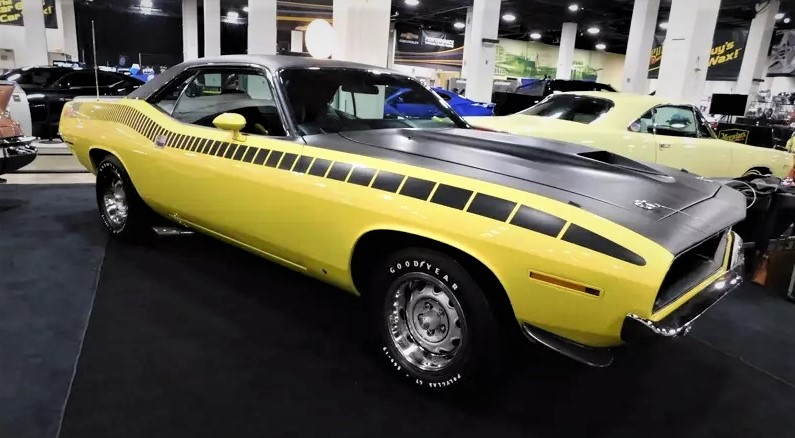
Yet after a two-year absence, with the competition and popularity of the Trans Am series heating up, Plymouth wanted back in the action for 1970. Seeing an opportunity, the automaker offered its freshly redesigned 1970 Barracuda to the All American Racers team to transform into a rip-snortin’ race car. (Dodge followed suit with its Challenger E-body cousin as well.)
Fun Fact: With AMC, Ford, and GM in the party too, 1970 represented the only time all the major domestic automakers fielded a factory backed Trans Am race team.
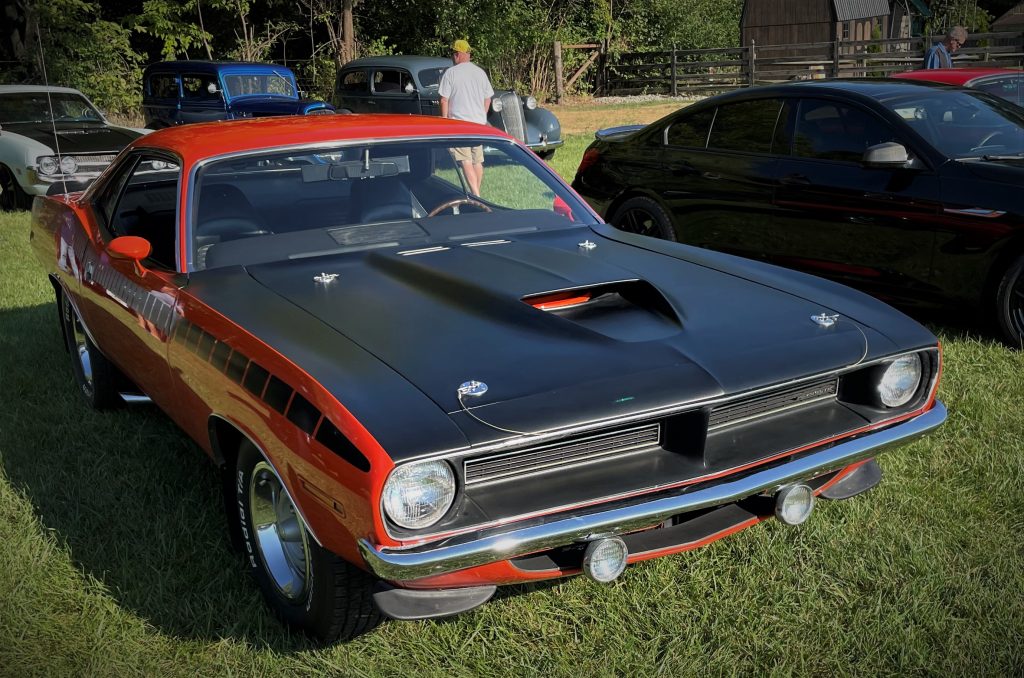
What is All American Racers?
All American Racers was a successful race team founded by none other than Dan Gurney and Carrol Shelby. The AAR team had its own engineering and R&D wings that designed and campaigned a fleet of potent “Eagle” cars in a wide rage of high profile races, including the Indianapolis 500 and Formula 1 events.
And thanks to the growing popularity of the nascent SCCA Trans Am racing series in the late 1960s, the All American Racers team was also looking for a suitable platform on which to build a competitive race car for the 1970 Trans Am season.
With Plymouth on-board, the AAR ‘Cuda’s path was set.
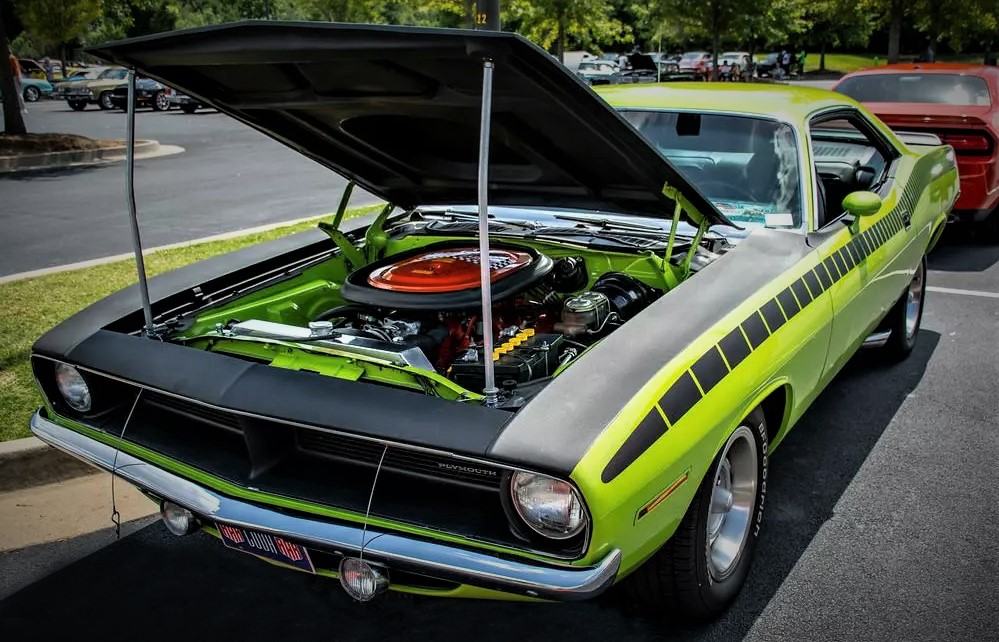
Our Favorite Word: Homologation
As much as we’d like to talk about the 1970 Trans Am season, let’s keep the focus on the street car here—because our favorite chapter in the AAR ‘Cuda story is coming up, the homologation part.
Homologation is a fancy word that, in a racing context, basically means that if a manufacturer builds a car for the race track, it has to offer a similar version to the public. In short, homologation is the reason we got to enjoy cars like the Plymouth Superbird, Ford RS200, Chevy Laguna Type S-3, and Lancia Stratos.
(If this sort of thing scratches your itch, check out Our Top 10 Favorite Race Homologation Special Models.)
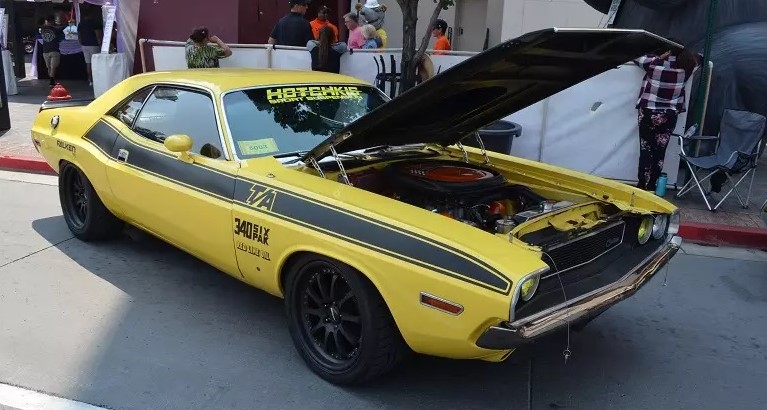
Suffice it to say, we like homologation.
So before Plymouth and All American Racers could put their car into SCCA competition, they had to build some for the public to buy first.
Meet the 1970 Plymouth AAR ‘Cuda
While the ones used on the track by AAR were no-holds-barred race cars, homologation rules allowed the street cars to be a tad more restrained.
For starters, the cars were ‘Cudas, which was more than a nickname at that point—indeed, ‘Cuda was a distinct performance submodel of the base Barracuda coupe. On the outside, AAR ‘Cudas were offered in an array of Plymouth’s High-Impact colors, including Vitamin-C Orange, Sassy Grass Green, Lemon Twist, and Tor-Red.
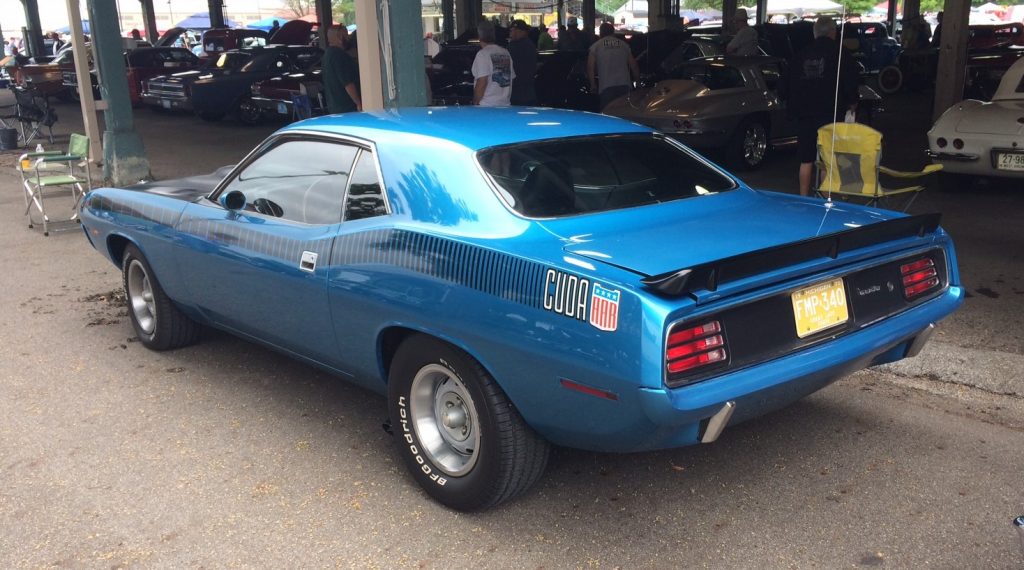
The cars also got several revisions outside too, like a slick strobe stripe along the flanks, a front air dam, and a special decklid spoiler out back. It’s also important to note that the AAR ‘Cudas all got a rad side-exit exhaust dumping out in front of the rear wheels.
In addition to a two inch lift out back to accommodate that exhaust, these cars got a special set of staggered tires (around 225/60/15 and 245/60/15 in today’s sizing) that resulted in a killer raked stance from the factory.
The exterior was topped-off with a unique fiberglass hood, which shed weight and channeled fresh air into the engine bay.
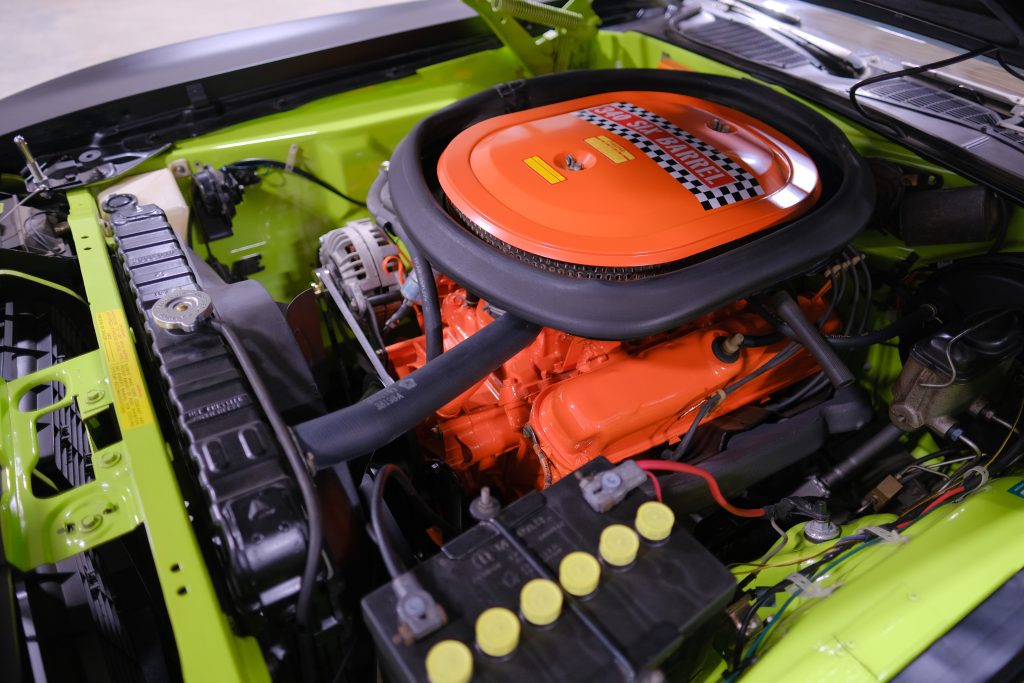
Under the hood was an exclusive Chrysler 340 “TA” small block with a six barrel (3 x 2) carburetor setup. Specially prepped for the AAR and Challenger T/A E-bodies, this powerplant had (among other upgrades) a stronger block casting and unique cylinder heads with improved flow. Thanks to the 340 TA, AAR ‘Cudas made 290 horsepower and 350 lbs.-ft. of torque—which many Mopar folks consider to be pretty conservative ratings.
Power got sent through your choice of a three-speed Torqueflite automatic or four speed manual transmission.
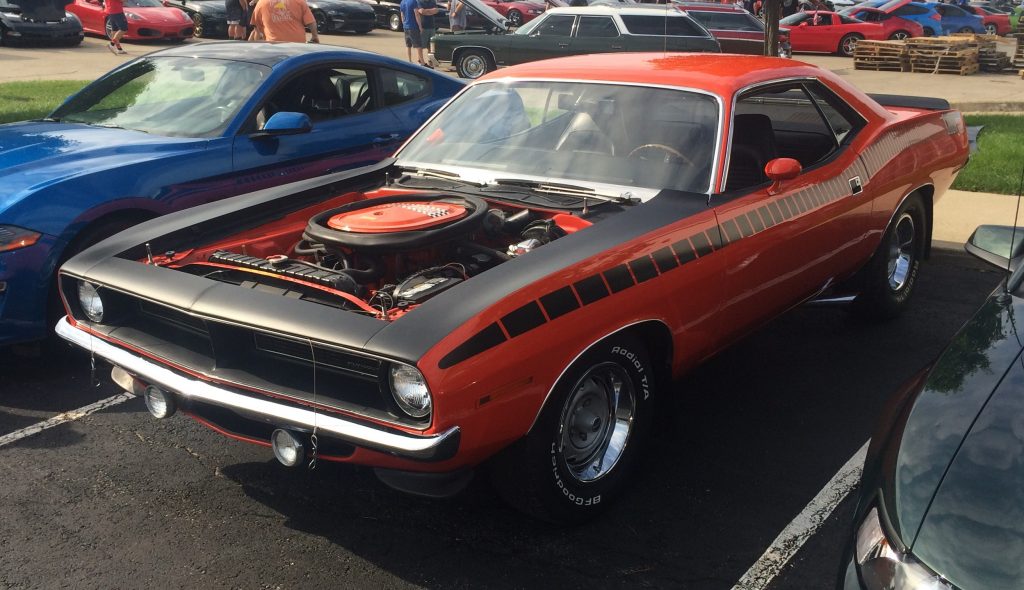
In the end, the AAR ‘Cuda was a one-year-only thing for Plymouth—which concluded Mopar’s tenure in the Trans Am racing series as well (both Dodge and Plymouth pulled out after 1970). The move was perhaps not surprising, considering Dodge and Plymouth finished a distant fourth and fifth in the Championship points that year.
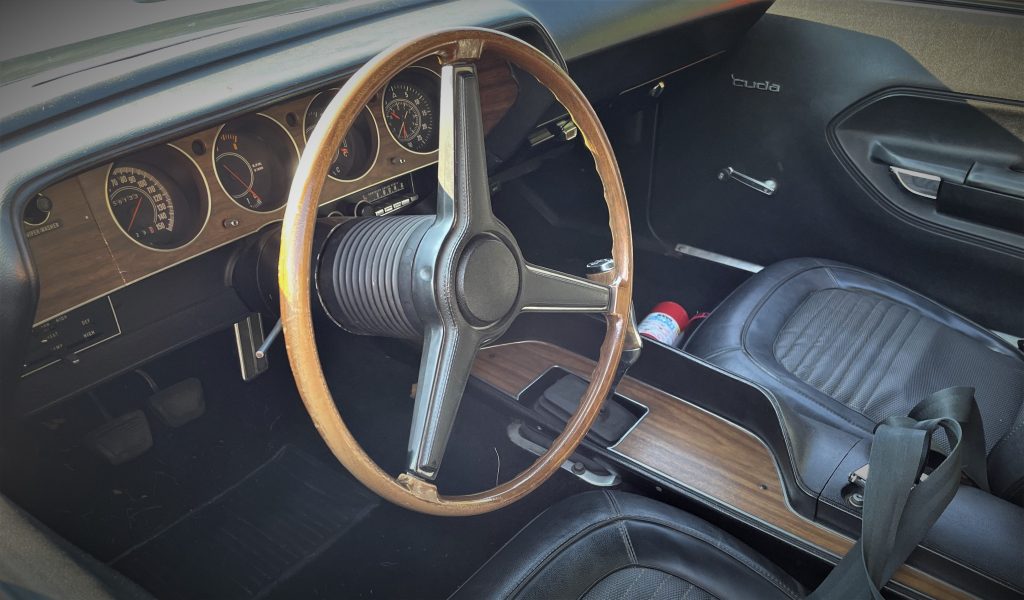
As far as the street cars are concerned, Plymouth made a little over 2,700 AAR ‘Cudas for the 1970 model year. (Dodge produced even less of its Challenger T/A models, with just shy of 2,400 leaving the factory.)
Yet despite its brief foray into Trans Am racing, Plymouth’s 1970 AAR ‘Cuda remains a rare and interesting chapter in Mopar muscle car history and is a fan-favorite at car show across the United States.
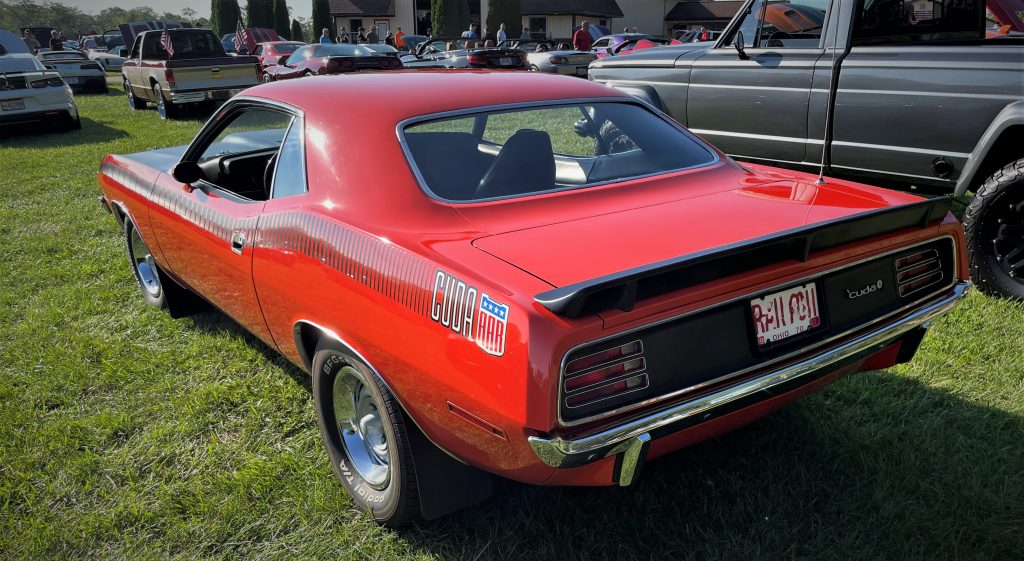

You need to win me one so I can walk away with this guy free. Maybe some money to go with it.
As a Kid, I had a 1971 Cuda, Lemon Twist Black side decals (383 magum), pistol grip 4 speed , Drove it one time at 140 plus miles per hr,
It was amazing, I missed that car the the day I traded in for a 1974 Barracuda stock 318, auto on the floor console,
But had insurance problems, My Cuda was a ticket(speeding) gettin son of a gun!
Thank you the info you post , It is my dream to have one more Cuda before I go to the other side!
Best to Ya!
Cowboy Out,
My Aunt and Uncle had an Orange AAR. I had a chance to buy it in ‘79. But I had just purchased my ‘70 Gremlin and told my mother(which my Aunt was my Moms sister), I can’t pay that for that car, that’s too much……..$1500
Hello Paul. I have 1 of 2724 AAR Cuda’s ever built. The color is FK5 Deep Burnt Orange Metallic. From the factory it arrived at the dealer with a bench seat and automatic on the steering column.
Your description of the 1970 AAR Cuda is right on queue. However, with all due respect to both 1970 E-bodies I want to point out that the only engines installed at the Hamtramck Michigan plant was the one and only 340 TA engine and not the 340 LA which was installed on all the other Mopars leaving the factory.
Please don’t take my comment as disrespectful toward you or your article it is top notch. Respectfully submitted.
John Tomakowski
Oh wow–you’re exactly right–it’s the TA 340. I’ll make sure to adjust that in the article–really appreciate the comment and glad you liked the story. Thanks for the feedback!
I have an AAR CUDA Red with Red interior ,body and interior just redone last year looks great. Seen one go at Kissimmee the same a little more than a year ago. 117,000.00 is what it brought. Red with Red interior is a little rare.
I also have a Red/Red 4-spd AAR that I’ve owned since 1977, they are VERY rare. I have only ever seen two others (yours would make 3) myself. According to an old Mopar Muscle article I read (Oct 2003 issue) about one of the two I’m aware of, Galen Govier said a total of 9 were ordered.